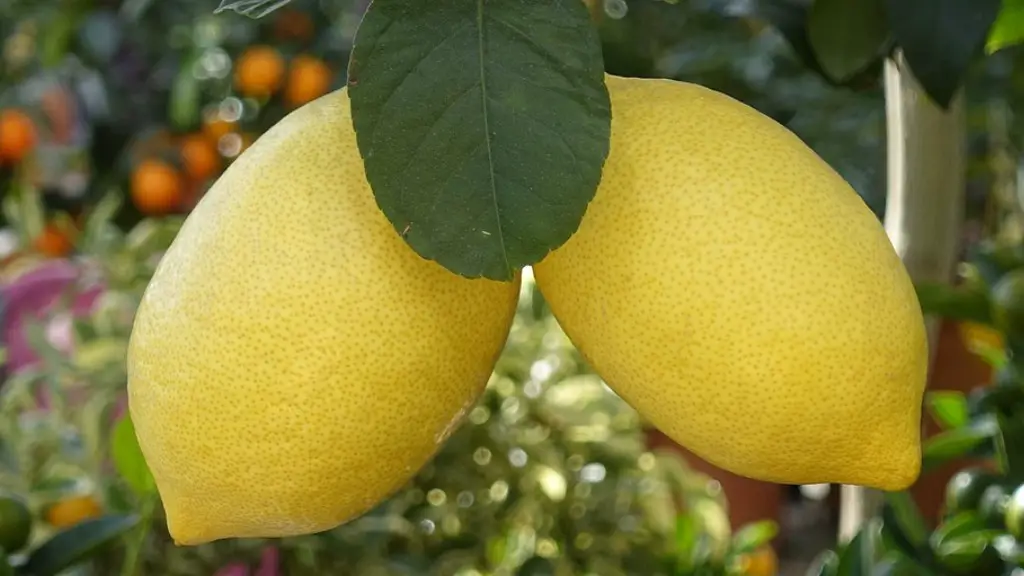Congratulations on your decision to grow a lemon tree from a pip! Growing a lemon tree from a seed is a satisfying experience, and a great way to ensure you have a steady supply of lemons on hand for your cooking and baking needs. In this article, we’ll discuss the different steps you need to take in order to successfully grow a lemon tree from a pip.
Seed Preparation
The first step before growing a lemon tree from a single pip is to prepare the seed. To do this, carefully remove the pip from the lemon and rinse it off to remove any leftover flesh or juice. Once this is done, soak the pip in warm water for around 24 hours in order to fully rehydrate it. Once the soaking is complete, gently rub the pip in your hands so that the seed coat breaks off. Once the seed coat is removed, the pip is ready for planting.
Planting the Seed
Once the pip is ready for planting, it’s time to move onto the next step of germination. Choose a container that is deep enough for root growth and fill it with a pre-moistened potting compost. Make a small hole in the compost big enough for the pip to fit in and plant the pip around an inch or two deep. Once planted, cover the area with a thin layer of compost and gently water it.
Positioning and Caring for the Plant
Once planted, the lemon seed needs to correctly positioned and cared for. Place the container in a location which receives lots of indirect sunlight and monitor the soil weekly to ensure it remains moist. If the soil starts to dry out, water it carefully. After a few weeks, the seed should have germinated and you’ll begin to see shoots emerging. During the next few months, gradually move the lemon tree to a larger pot as its roots start to expand.
Fertilizing and Pruning the Tree
Once the seed has germinated and the tree has grown a bit, it’s important to start fertilizing the soil regularly in order to ensure the lemon tree grows healthy and strong. Choose a fertilizer specifically formulated for citrus plants and apply it as often as the instructions state. When the tree has grown to the desired height, it’s important to begin pruning it in order to maintain its shape and keep it healthy.
Harvesting and Protecting the Fruit
When the lemon tree starts to grow flowers and fruit, it’s important to protect it from pests. If there are signs that the fruit is being targeted by pests, consider using an appropriate pesticide to protect it. Once the fruit is ripe, usually after 8 to 12 months, it’s time to start harvesting it. Pick the lemons by hand and enjoy the fruits of your labor!
Additional Tips
Growing a lemon tree from a pip is a rewarding experience, but there are several things you should keep in mind. Make sure you choose a sunny spot for the lemon tree, provide it with plenty of water and fertilize the soil regularly to keep it healthy. If you want to maximize the yield of your lemon tree, consider pursuing a technique known as ‘girdling’, which involves removing a small strip of bark from branches that produce fruit in order to stimulate growth.
Training the Tree
Sometimes, citrus trees need a bit of assistance growing in the right direction. To do this, support your tree with wooden stakes and use string or flexible tree ties to guide the branches in the right direction. If your tree is exposed to strong winds, you may need to take extra steps in order to protect it. Consider using a shelter screen or using a method known as ‘guy wire’ to secure tall trees.
Pest Control
In addition to training and fertilizing your tree, proper pest control is essential in order to ensure your lemon tree is healthy and productive. If you notice signs of any pests, be sure to take immediate action. Use an organic pesticide to prevent damage to your tree, and ongoing monitoring of your lemon tree is a must.
Watering
It’s important to keep your lemon tree well-watered throughout the year, particularly during dry seasons. Avoid over-watering or letting the soil dry out completely, as this can cause significant damage to your lemon tree. Aim to water your tree once a week and increase watering during dry spells.


